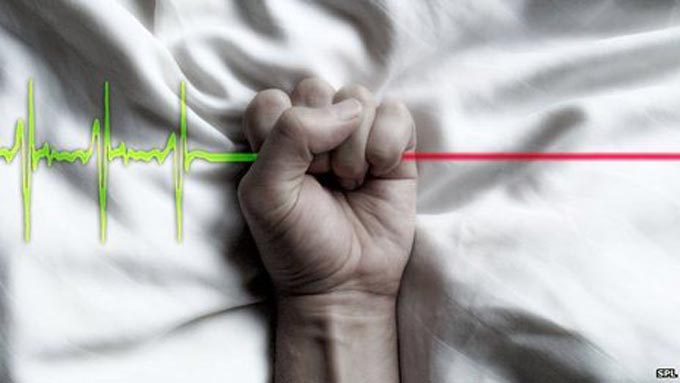Blog Post
The Globe and Mail highlights Vancouver abortionist as an assisted suicide pioneer
By Jonathon Van Maren
As Canada’s euthanasia regime takes shape, suicide activists are already pushing to expand the categories of eligibility for killing. Nothing highlights this fact more starkly than a recent essay published in the Globe and Mail titled “Fight to the death: Why Canada’s physician-assisted suicide dying debate has only just begin,” penned by Sandra Martin.
Martin ignores the genuine abuses that some are already experiencing under this regime, including this horror story published earlier this month in the Toronto Star:
On Feb. 14 (Valentine’s Day) Foley’s lawyer, Ken Berger, filed suit in Ontario Supreme Court on his behalf. The suit charges that Foley’s Charter rights have been violated through official “failures to relieve the plaintiff’s intolerable suffering, [instead] providing the option of assisted suicide rather than assisted life.”
Foley’s condition is in his own words “grievous and irremediable,” the standard by which the Supreme Court judged medical assistance in dying is to be available to all. But while the condition is irremediable, as was Hawking’s, that does not mean his life quality is unsustainable. With proper and qualified home aides and support Foley could live a safe and full if restricted life.
That, his suit alleges, is what he has not received. After being fed food left out too long he was hospitalized for food poisoning; he was dragged on the floor by caregivers who did not know how to effectively transfer him from his bed. “Workers lacked the ability to assist with his exercises. He suffered injuries as a result.”
In short, Berger was offered suicide rather than actual care. This type of scenario is likely to play out increasingly often—Martin’s complaint, it turns out, is that physicians in Canada have been insufficiently eager to kill their patients upon request since the legalization of euthanasia:
The first giant step had been taken. Patients had scored a legal victory for choice at end of life. But that didn’t mean doctors were willing to help them die. “Let the vets do it,” an eminent practitioner told me dismissively. “Killing patients isn’t medicine.”
Which is precisely the case. But Martin dismisses the concerns of these physicians, and instead highlights Vancouver abortionist Ellen Wiebe, who also performs euthanasia, as an inspiration we should follow. In order to normalize assisted suicide, Martin says, suicide activists should work hard to tell compelling stories of suffering people. A recent column by TVO’s Steve Paikin on his friend’s decision to opt for suicide would be an example of that, and Hollywood has been building support for assisted suicide through films like Million Dollar Baby, Me Before You, and TV shows like House MD for years.
But these stories, while functioning as a powerful tool to build public support for assisted suicide, have still not been able to persuade many physicians to embrace the practice—in fact, an essay in Toronto Life last year revealed that doctors who initially said they would be willing have since asked that their names be removed from the list of those willing to provide the “service.” Martin bemoans the fact that palliative care practitioners are not willing to provide suicide services:
In October, 2015, the Canadian Society of Palliative Care Physicians made it official. “Palliative care does not include physician-hastened death,” the group announced in a bald statement.
“Doctors are very conservative,” Dr. Gardam says. Whenever there is a big shift in how a specialty operates, there is an inherent reluctance to accept a new way of practising medicine. Palliative-care doctors “grew up in an era when physician-assisted death wasn’t possible,” Dr. Gardam notes, “so it is going to take a while for them to wrap their heads around it.”
Notice the shift in language here: Suicide, which has historically been seen as an ultimate tragedy, is now simply a “new way of practicing medicine.” It is not presented as an ethical concern so much as something doctors are going to have to “wrap their heads around.” The simple fact is that this debate, says Martin, is all about “choice”—the same language used to normalize abortion, although in this case it is suicide rather than the killing of another that is at stake:
That attitude, though, ignored the sensibilities of the boomer generation – and its insistence on making its own choices. After all, Ms. Rodriguez had had access to excellent palliative care in the early 1990s, but she didn’t want to succumb to the ministrations of others. She wanted to live until she decided it was time to die, and she wanted to do it quickly and while she was still lucid. Palliative care can dull the pain and sedate you into unconsciousness, but it can’t give you control or choice – and that is what Ms. Rodriguez wanted.
This choice, Martin believes, is far more important than the choice of doctors to decline killing as part of their work. Martin calls our flimsy restrictions on assisted suicide “regressive”—because they do not allow us to kill as many people as other nations, like Oregon and the Netherlands. Canadians should look to abortionist Ellen Wiebe, says Martin, who has already been pushing the boundaries of what is seen as acceptable killing:
None of that would have happened so quickly without Dr. Wiebe’s audacity as a provider. That’s why she is in the vanguard, a fearless doctor who is leading her reluctant medical colleagues to an ethical tipping point that is normalizing patient choice in death as it already is in life…Forget the floor. The Liberal government excavated the basement as a platform for its regressive MAID law. It excluded the option of assisted death for patients suffering primarily from a treatment-resistant mental illness; for terminally ill mature minors; and for people who had completed advance requests after being diagnosed with some form of dementia, but while they were still competent.
Interestingly, Martin presents the euthanasia regimes of places like Oregon and the Netherlands without mentioning a single incident of abuse—such as the case of an elderly woman with dementia being held down so the doctor could administer the lethal injection, or those with depression utilizing state-provided suicide, or people being offered suicide rather than the healthcare they seek, or increasing incidents of “involuntary euthanasia,” which we used to call “murder.” Wiebe, she says, is the suicide pioneer Canada needs:
While some critics accused Ms. Wilson-Raybould of ageism, Dr. Wiebe took the explanation at face value. As she explained to me, she consulted actuarial tables to calculate that Ms. Carter could have lived another five or six years, had she not travelled in secret to die in Switzerland in 2010. Consequently, Dr. Wiebe defined a “reasonably foreseeable death” as likely to happen within five or six years, a much more expansive interpretation than a prognosis of six months or less, which is the rule of thumb for most assisted-death providers in this country.
After studying the A.B. decision, Dr. Wiebe consulted her actuarial tables once again, and calculated that, at 77, A.B. could have lived with her condition for another 10 years. If she was eligible for an assisted death, perhaps there were other patients on Dr. Wiebe’s roster in similar situations who would also qualify – a conclusion that hadn’t yet occurred to most stakeholders in the assisted-dying world.
So there you have it. Our “regressive” laws can already be mangled beyond recognition to permit more and more people to kill themselves. This, says Martin sanctimoniously, is “our final human right.” She also provides a grotesque insight into Wiebe’s ethics—one of the hardest things she’s ever done, says Wiebe, was to initially turn down a suicide request from a patient with Parkinson’s—a patient she later killed anyway. This action, like the other boundary-smashing deaths facilitated by Ms. Wiebe, are presented as heroic actions by Martin, who concludes her essay by laying out where Canada needs to go next:
We need legislative change to make Bill C-14 compliant with the Charter and the Carter decision, especially in terms of the vague “reasonably foreseeable natural death” criteria, the exclusion of mental illness and bizarre faith-based institutional exemptions.
In Martin’s view, religious liberty, conscience rights, and the ethical concerns of physicians are “bizarre” and need to be dispensed with—doctors must be forced to kill or refer, and faith-based institutions must change their mandate to permit killing. Those suffering from mental illness must be offered suicide, and we need to be permitted to kill younger people, too. This brutally honest essay lays out exactly what Canada’s suicide activists want to bring to this country–and exactly what we must push back against.
In order for those of us who still believe that suicide is a tragedy and that killing is not healthcare to respond to these suicide activists and a culture that is increasingly embracing their agenda, we have to be able to articulate our responses. To that end, my colleague Blaise Alleyne and I wrote a little book last year, A Guide to Discussing Assisted Suicide, that explains how we can respond to their arguments—each of these responses was tested for effectiveness, and each of these arguments have been used to change minds on this issue. The book has already been recommended by many healthcare practitioners, and for any of you who are interested in equipping yourselves to respond to this growing culture of death, I humbly recommend it to you, as well.
______________________________________________________
For anyone interested, my books: The Culture War, Seeing is Believing: Why Our Culture Must Face the Victims of Abortion, and How To Discuss Assisted Suicide, are available for sale here.








